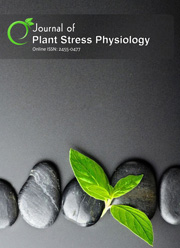Evaluation of Hararge coffee (Coffea arabica L.) landraces for moisture stress tolerance
DOI:
https://doi.org/10.25081/jpsp.2021.v7.6413Keywords:
Coffee landraces; Eastern Ethiopia; Genetic diversity; Moisture stressAbstract
Arabica Coffee is an important export commodity for Ethiopia, contributing 25 to 30 % of the country’s total foreign exchange earnings. Moisture stress is one of the major constraints of coffee production in Hararge, Eastern Ethiopia. Moisture stress affects the growth, yield and quality of coffee. Local coffee landraces are source of desirable traits including moisture stress tolerance. Accordingly, this study was conducted to evaluate Hararge coffee landraces for moisture stress tolerance. Treatments consisted of 200 coffee landraces (178 from seven districts of east Hararge Zone and 22 from two districts of west Hararge Zone). The coffee landraces were field planted in July 2005 at Mechara Agricultural Research Center using augmented design with six trees per plot or accessions. Moisture stress tolerance was recorded from three randomly selected coffee trees per plot, three times a day (in the morning, noon and night) from January 05 to 25, 2014. The stress tolerance was determined using 1-5 scale by visual scoring (1- all leaves green and turgid, 2- most leaves still turgid but younger leaves show leaf folding; 3- all leaves wilt or fold, 4- Leaves partially turning pales, and partly shed showing severe wilting and 5-leaves completely turning brown and dry, mostly dropping). The collected data were analyzed using descriptive statistics. The result of this study revealed that the coffee landraces varied in their level of tolerance to moisture stress. The 200 coffee landraces were grouped into seven clusters based on their level of tolerance to moisture stress. Nine coffee landraces (4.5%) were highly tolerant to moisture stress, 25 (12.5%) were tolerant, and 36 (18%) were moderately tolerant. On the other hand, 60 coffee landraces (30%) were less tolerant; while 57 (28.5%), 11(5.5%) and 2 (1%) were moderately sensitive, sensitive and highly sensitive to moisture stress, in that order. There was variation in coffee landraces for moisture stress tolerance both between and within areas of the collection. Hence, it is advisable to maintain and use promising coffee landraces in coffee breeding. Screening of the landraces under controlled conditions like green house and studying of mechanisms of moisture stress is also the way forward.
Downloads
Published
How to Cite
Issue
Section
Copyright (c) 2021 Journal of Plant Stress Physiology

This work is licensed under a Creative Commons Attribution 4.0 International License.



 .
.